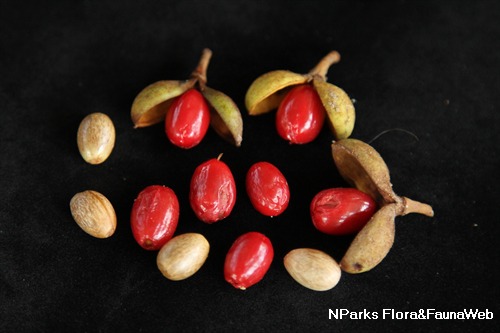
Back
Knema latericia subsp. ridleyi (Gand.) W.J.de Wilde
| Family Name: | Myristicaceae |
| Synonyms: | Knema conferta Warb. subsp. borneensis, Knema meridionalis J.Sinclair |
Name
Classifications and Characteristics
| Plant Division | Angiosperms (Flowering Seed Plants) |
|---|---|
| Plant Growth Form | Tree |
| Lifespan (in Singapore) | Perennial |
| Mode of Nutrition | Autotrophic |
| Plant Shape | Irregular |
| Maximum Height | 20 m |
Biogeography
| Native Distribution | Peninsular Thailand, Sumatra, Peninsular Malaysia, Singapore, and Borneo |
|---|---|
| Native Habitat | Terrestrial |
| Preferred Climate Zone | Tropical |
| Local Conservation Status | Native to Singapore (Endangered (EN)) |
Description and Ethnobotany
| Growth Form | It is a tree or shrub 2–20 m tall, with no buttress roots. |
|---|---|
| Foliage | Its spirally arranged, stalked leaves have thinly leathery leaf blades that are oblong to lance-shaped, rarely narrowly drop-shaped, with a pointed tip, green above, grey or whitish below, 6–30 by 4–10 cm, midrib raised above, and have 9–25 pairs of lateral veins that are raised above. |
| Flowers | The plant is dioecious, producing male or female flowers on different plants. Its flowers are brick-red inside, covered with persistent hair 0.2–0.7 mm long, and are arranged at the leaf axils in short, densely crowded, simple or branched, warty, stalkless flowering clusters up to 10 mm long, 3–20-flowered in male clusters, and 2–10-flowered in female clusters. |
| Fruit | Its fruit is broadly ellipsoid to drop-shaped, 1.5–3 cm long, covered with bright brown to rusty-reddish hair 1–2 mm long, with a 2–3 mm thick dry fruit wall, and arranged in a stalked clusters of 1–4 fruits. Its seeds are ellipsoid, covered with an aril, and not variegated. |
| Habitat | It grows in primary, degraded, and dipterocarp forests, as well as kerangas, on hill sides, ridges, up to 1500 m altitude. |
| Associated Fauna | Its flowers are insect-pollinated. Its seeds are dispersed by frugivorous birds or mammals. |
| Cultivation | It can be propagated by seed. |
| Etymology | Greek knema, wheel spoke, referring to the stamens; Latin latericia, brick-red, referring to the brick-red inner surface of the perianth; ridleyi, commemorating Henry Nicholas Ridley (1855–1956), a botanist and the first director of the Singapore Botanic Gardens |
Landscaping Features
| Landscaping | It is suitable for parks. |
|---|---|
| Landscape Uses | General, Parks & Gardens |
Fauna, Pollination and Dispersal
| Fauna Pollination Dispersal Associated Fauna | Bird-Attracting |
|---|---|
| Pollination Method(s) | Biotic (Fauna) |
| Seed or Spore Dispersal | Biotic (Fauna) |
Plant Care and Propagation
| Light Preference | Full Sun, Semi-Shade |
|---|---|
| Water Preference | Moderate Water |
| Plant Growth Rate | Moderate |
| Rootzone Tolerance | Moist Soils, Well-Drained Soils, Fertile Loamy Soils |
| Maintenance Requirements | Moderate |
| Propagation Method | Seed |
Foliar
| Foliage Retention | Evergreen |
|---|---|
| Mature Foliage Colour(s) | Green |
| Mature Foliage Texture(s) | Leathery, Thin |
| Foliar Type | Simple / Unifoliate |
| Foliar Arrangement Along Stem | Alternate |
| Foliar Attachment to Stem | Petiolate |
| Foliar Shape(s) | Non-Palm Foliage (Lanceolate, Oblong) |
| Foliar Venation | Pinnate / Net |
| Foliar Margin | Entire |
| Mature Foliage Colour(s) Remarks | Grey or whitish below. |
Floral (Angiosperm)
| Flower & Plant Sexuality | Unisexual Flowers , Dioecious |
| Flower Colour(s) | Red |
|---|
| Flower Grouping | Cluster / Inflorescence |
| Flower Location | Axillary |
| Flower Symmetry | Radial |
Fruit, Seed and Spore
| Mature Fruit Colour(s) | Brown, Yellow / Golden |
|---|---|
| Mature Fruit Texture(s) | Hairy / Hirsute |
| Fruit Classification | Simple Fruit |
| Fruit Type |
Image Repository
Others
| Master ID | 31881 |
|---|---|
| Species ID | 6282 |
| Flora Disclaimer | The information in this website has been compiled from reliable sources, such as reference works on medicinal plants. It is not a substitute for medical advice or treatment and NParks does not purport to provide any medical advice. Readers should always consult his/her physician before using or consuming a plant for medicinal purposes. |

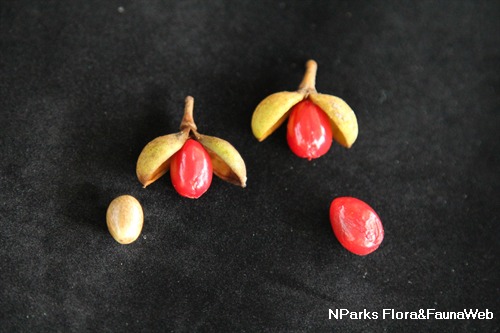
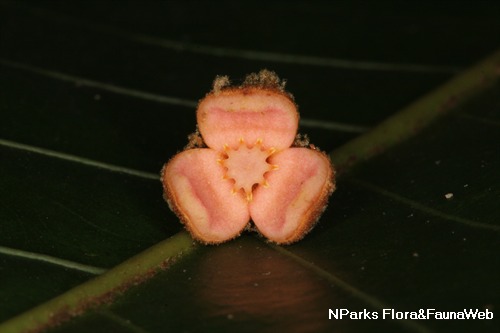
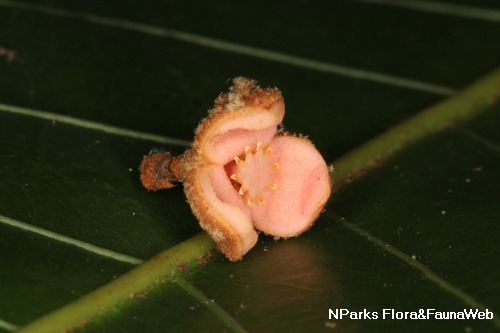
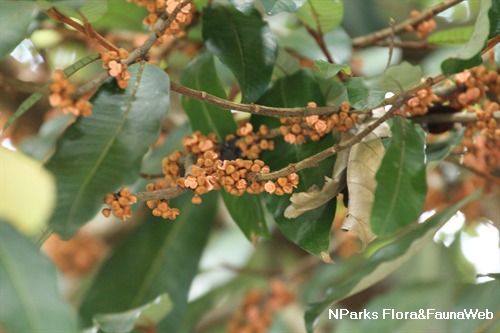
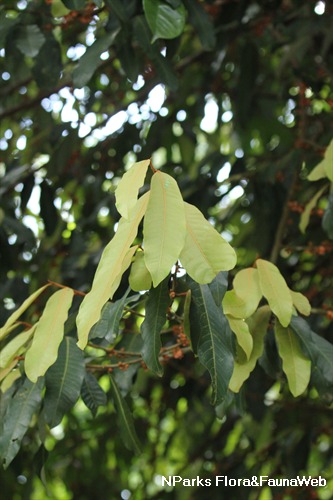
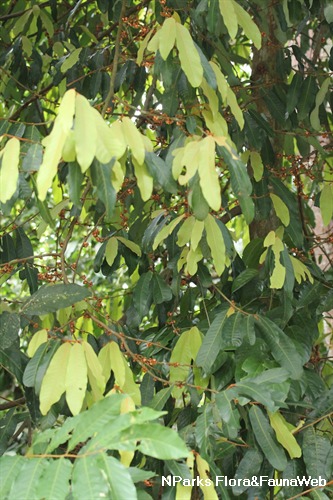
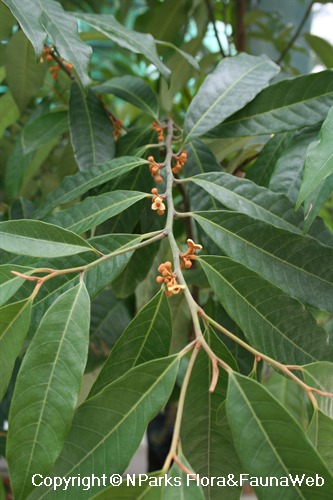
.jpg)

